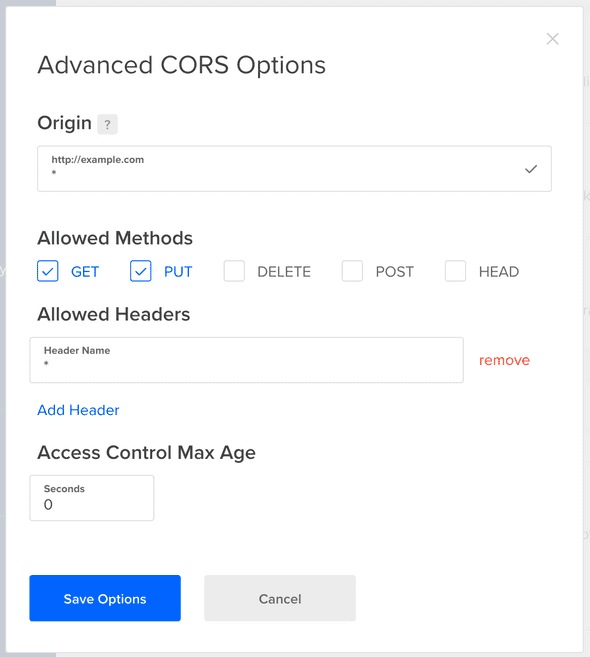CORS - Cross-Origin Resource Sharing
CORS
Request headers
When sending an HTTP request you can add headers to pass additional information to the server with an HTTP request.
Request headers contain more information about the resource to be fetched, or about the client requesting the resource. (taken from here)
Example:
-
The
Accept-*headers indicate the allowed and preferred formats of the response (taken from here) - -
Security reason: Cross-site request forgery
- see https://cheatsheetseries.owasp.org/cheatsheets/Cross-Site_Request_Forgery_Prevention_Cheat_Sheet.html#token-based-mitigation
- TODO: Read Eli5 https://www.reddit.com/r/explainlikeimfive/comments/wayk3/eli5_cross_site_request_forgery_csrf/
Same-origin security policy
For security reasons, browsers restrict cross-origin HTTP requests initiated from scripts.
A web application using those APIs can only request resources from the same origin the application was loaded from unless the response from other origins includes the right CORS headers.
Modern browsers handle the client side of cross-origin sharing, including headers and policy enforcement. But the CORS standard means servers have to handle new request and response headers.
(all taken from here)
Cross-origin writes are typically allowed (taken from here).
How to set up CORS
Client web applications loaded in one domain can interact with resources in a AWS S3 Bucket/Digital Ocean Space with Cross-Origin Resource Sharing (
CORS) configured.
It’s about this HTTP request header field:
-
Web-App: The Access-Control-Allow-Origin response header indicates whether the response can be shared.
During development (before the app goes life) you need a bit more open as you’re operating from a local machine. Thus, cross origin requests should be possible from every origin (
*):"Access-Control-Allow-Origin": "*",In the best case we limit it to only the hostname of the application, so only requests with this origin can upload files:
"Access-Control-Allow-Origin": "https://app.myHomepage.org",This assures that only requests which come from
https://app.myHomepage.organd go directly to the server from there are treated. -
Server Configuration: Set the origin (domain) from which requests to the resource are allowed:
- Unsafe: Allow all origins with any kind of header:
Example
- File upload page is hosted on https://app.myHomepage.org/upload
-
The login request includes the following header:
"Access-Control-Allow-Origin": "https://app.myHomepage.org", -
The file-upload server has the following list of allowed origins configured:
https://app.myHomepage.org https://v1.myHomepage.org https://v2.myHomepage.org -
Congrats! It will work because two things match!
- The value set for
Access-Control-Allow-Originmatches the origin of the request - The value set in
Access-Control-Allow-Originis included in the list of allowed domains.
- The value set for
Postman & CORS
Postman simply doesn’t care about CORS headers. So CORS is just a browser concept and not a strong security mechanism. It allows you to restrict which other web apps may use your backend resources but that’s all.
Taken from Understanding CORS article.
Discuss on Twitter ● Improve this article: Edit on GitHub
